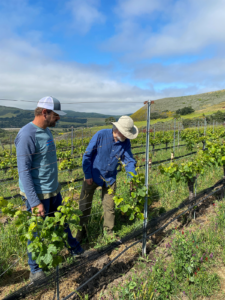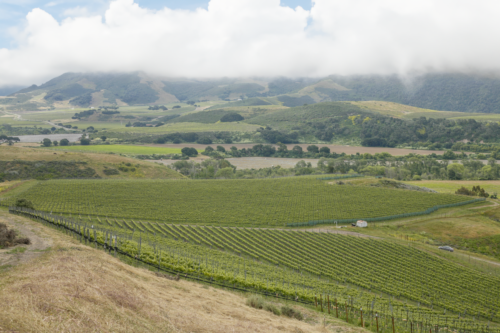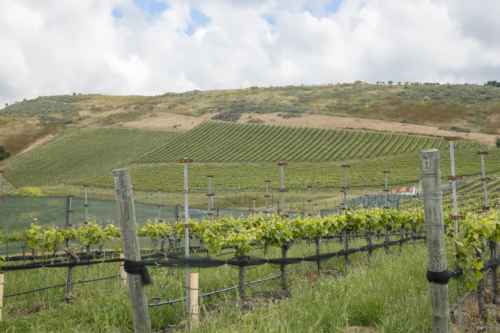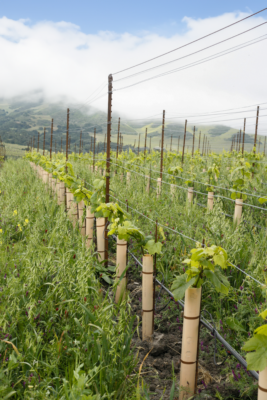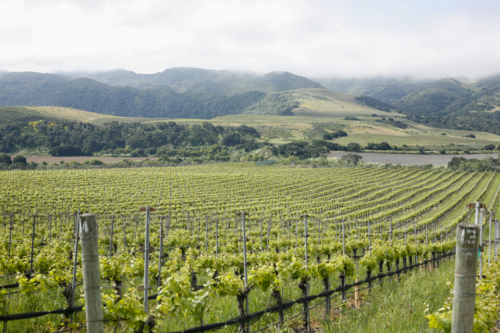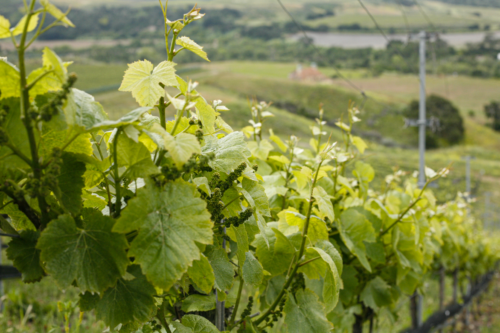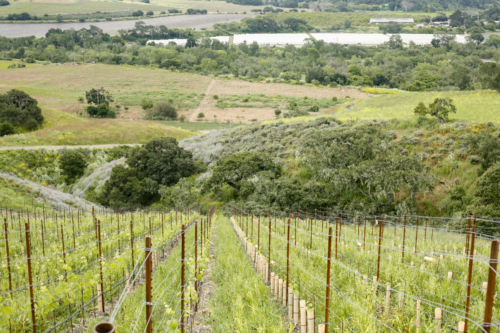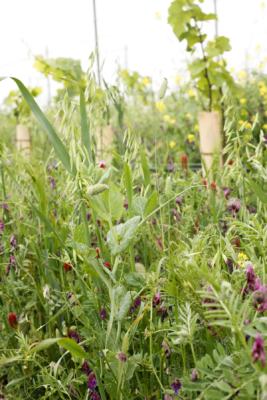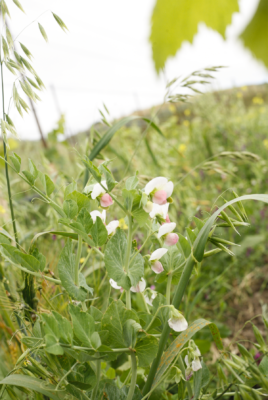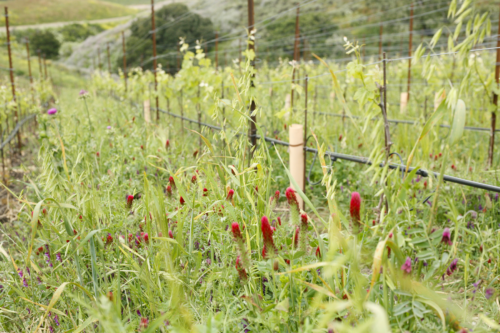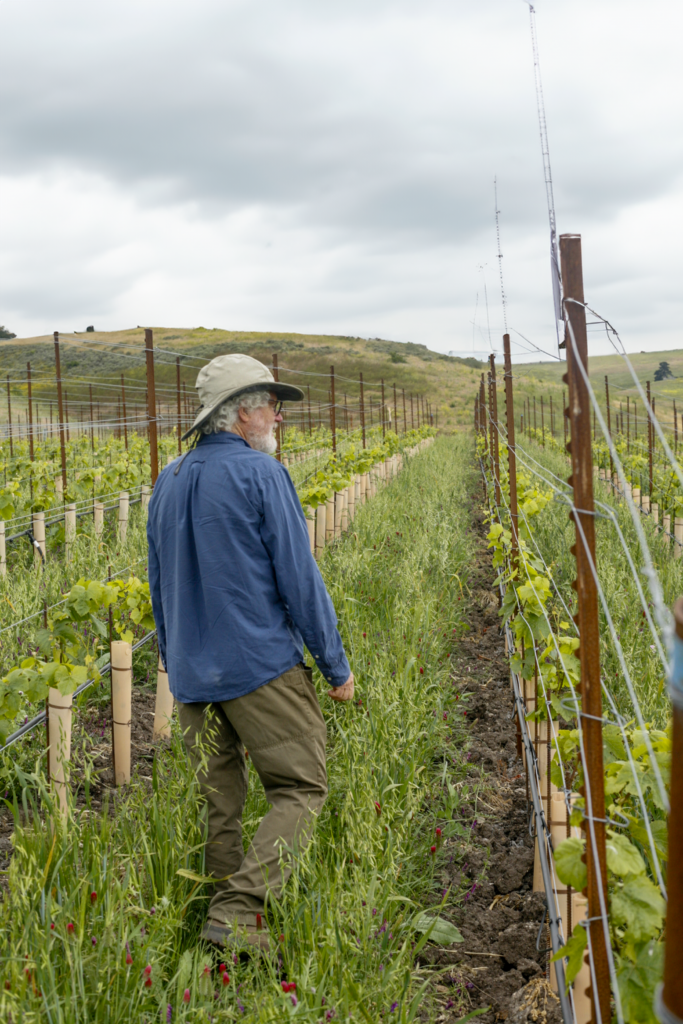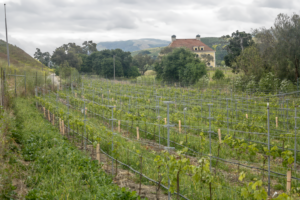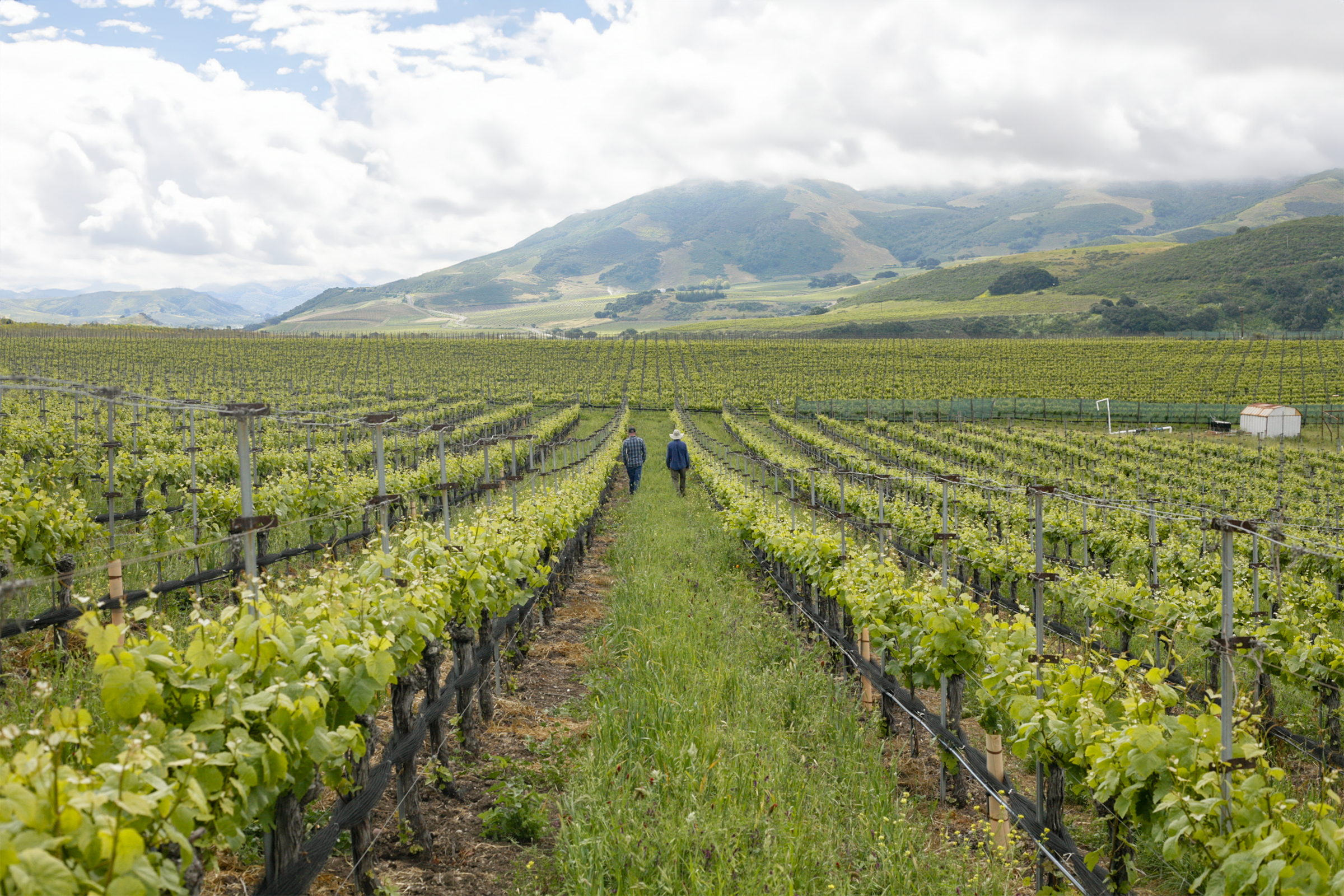
It’s wild to think it has already been three years since we acquired Fe Ciega.
Right now we are selling the last of our main cuvees of Fe Ciega Pinot Noir from 2021, which was the first vintage under Adam’s stewardship (though we’ve made the wine since 2003). Soon the 2022s will be bottled, and we’re a year out from bottling our 2023s. We’ve only begun to reveal what this vineyard will provide with the changes we’ve made over the past three years.
With that inevitable lag between production and release, we thought it was high time to share what we’ve been up to with our work at Fe Ciega.
The biggest change has been the conversion to organic farming. Adam has entrusted local vine-wizard Chris King (of Cosecha Farming) to implement this new regime. Chris has farmed organically in the Sta. Rita Hills since 2007. He manages the vineyards at Domaine De La Cote (just down the road from Fe Ciega) and other sites in the region.
Another big change was that we planted new grape varieties. Since it was planted in 1998, Pinot Noir has been the main grape at Fe Ciega. There was once a small block of Chardonnay at the bottom of the property, but it only gave a few harvests before Pierce’s Disease wiped it out. We replanted that spot with the same PD-resistant varieties that we grow in Oak View. We did bring Chardonnay back though, with an acre-plus planting on the mesa. We’ve also added an acre-plus block of Syrah on a steep, south-facing hillside. This year will be the “third leaf” for the new vines, which means they will provide fruit in the 2024 vintage.
ORGANIC CONVERSION:
Converting to organic farming was the top-priority when Adam & Helen acquired Fe Ciega. Working with organic growers has always been a desire at The Ojai Vineyard. We farm our estate vineyard with strictly organic methods. Many of the other vineyards we work with are farmed organically but are not certified. Others are most of the way there, but climate or terrain requires the use of some synthetic inputs.
Adam knew we could pull off organic farming at Fe Ciega. Moreover, he knew that the vines needed it.
In prior years, the farming at Fe Ciega was constrained by budget and leaned on conventional methods. The fruit continued to provide everything needed to make outstanding wine. Still, Adam noticed the vines were not completely happy. They lacked sufficient vigor to make the canes fully reach their neighbor after pruning. So, yields were depressed to some extent. Years back we saw that the vineyard’s drought-resilience needed work too.
Getting things fully right required building the soil. The practices we’ve leaned into include planting diverse cover crops, mulching with compost, and using organic fertilizers like feather meal. All these practices help bolster the soil’s microbial activity and create more organic matter. Over time this creates less compacted soil with better water-holding capacity, better erosion resistance, and natural sources of nitrogen to further canopy development.

As far as other inputs go, we do not use any herbicides. Like our estate vineyard in Oak View, we use a tractor implement called a Clemens to mechanically eliminate weeds beneath the vines. This machine moves a blade under the soil to sever the weeds from their roots. The mid-row cover crops are mowed in late-Spring and left to decompose as a green manure (rather than being disced into the soil).
We don’t use any synthetic pesticides either. To stave off the threat of Pierce’s Disease we’re spraying kaolin clay onto the vines throughout the vineyard. The ghostly white residue it leaves confuses insects, and has an abrasive grit that is said to irritate their exoskeletons. It’s a proactive approach to prevent pests from establishing themselves in the vineyard. So far we’re pleased with the results.
Lastly, our approach to rodent control is strictly chemical-free. Gophers are a relentless threat to vineyard infrastructure. It’s well documented that using poison against them has horrific consequences moving up the food chain. So instead, we have some dear friends and family members who help with trapping them. Some weekends they’ve caught nearly 40! The land and the ecosystem are much happier for it.

NEW PLANTINGS
Since Fe Ciega was planted in 1998, it has always been a Pinot Noir vineyard (besides the short-lived block of Chardonnay). That changed back in 2022, when we added a few more varieties across various parts of the property. This year will be the first vintage that we’ll be able to harvest this new fruit, which we’re ecstatic about.
Chardonnay
On the eastern edge of the property there was a section of Pinot Noir that truly struggled, barely producing any fruit. We tore out those vines and ripped the soil deep to prepare it for a new block of densely-planted Chardonnay.
This is a 1.3 acre block that is planted to three different clones: Dijon 76 & 95, plus Clone 4 from UC Davis. The Dijon pair tend to provide a more intense, full-bodied Chardonnay (like our old Solomon Hills Chardonnays). Whereas Clone 4 from UC Davis tends to provide racy, laser-like focus when grown in cool-climates (see our Bien Nacido Chardonnays). The blend of all three should be thrilling, and we should be able to make a decent amount of it.
Syrah
Of course, Adam couldn’t resist adding Syrah at Fe Ciega. There was a steep, south-facing hillside that looked like the perfect spot to grow Syrah with intense cool-climate savor. We planted four different clones across 1.1 acres with tight spacing like our Chardonnay.
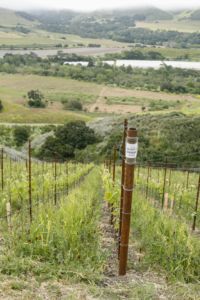
The new Syrah block is on a steep south-facing hillside.
Syrah is moderately productive, so with that and the high vine density, we expect we’ll be able to make a decent amount of Fe Ciega Syrah each year. Enough for us to share in the wholesale market.
PD-Resistant Varities
There’s a little slice of land just south of the road that cuts through our property at Fe Ciega. This abuts what used to be Sweeney Canyon Vineyard. This was all Chardonnay at one time, but being so low and close to the river, the entire thing was ravaged by Pierce’s Disease.
We’re using that skinny two-thirds of an acre section to trial the PD-resistant varieties that we have planted by the winery in Oak View. It’s sort of an academic project, to see what flavors these vines can provide in cool-climates. We may wind up blending it with our stuff grown in Oak View, or maybe it will make for distinctive tiny bottlings. We’ll see!


